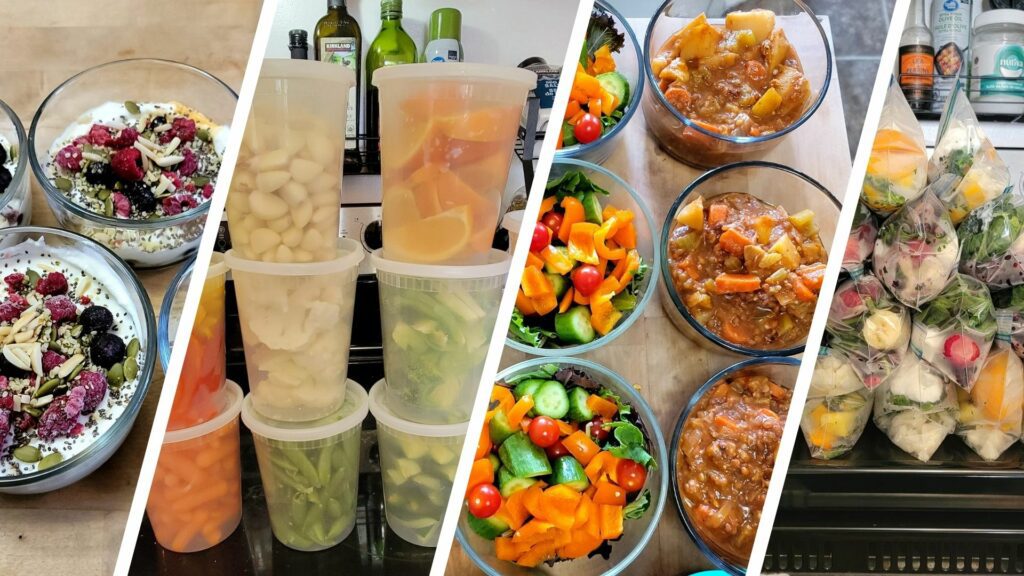Meal prepping can be an excellent strategy to promote healthy eating, save time, and alleviate pain and fatigue associated with rheumatoid arthritis (RA). Especially during evenings when symptoms peak and fatigue becomes debilitating, the task of making food and preparing meals can be daunting. Meal prepping allows you to take action and proactively address these challenges.
By planning and preparing meals in advance, you ensure that nutritious ingredients are readily available, reducing the temptation to order expensive, potentially inflammatory foods. Additionally, it helps prevent weight gain and feelings of guilt and frustration. With meal prepping, you regain control over your nutrition, provide nourishing meals for yourself and your family, and alleviate the stress of daily cooking.
Benefits of Meal Prep
Meal prep offers me greater control over the ingredients I use compared to meal kits like Goodfood or Hello Fresh. By preparing my own meals, I can prioritize high anti-inflammatory foods while avoiding those that may exacerbate inflammation.
Involving my 11-year-old son in meal prep has proven incredibly beneficial. Not only does it free up my energy for other tasks instead of constantly cooking for two, but it also teaches him valuable life skills. He assists me with tasks such as chopping veggies and doing dishes, allowing us to share the workload while he learns important skills. One aspect we focus on is preparing his lunches for the school week, which has become a routine part of our meal prep.
While meal prep is a valuable strategy for RA, it can present challenges due to our symptoms. However, I have found ways around the kitchen and meal prepping that work for me and my RA.
Navigating Meal Prep Vs. Arthritis Symptoms
If I am having fatigue or a high-pain day, I probably won’t be spending hours on meal prep. Chronic illness can be bumpy and we must adapt to our daily capabilities. While I recommend meal prepping on days with more energy and less pain, that’s not always feasible, so go small and go slow.
Here are some tips to ease the process:
- Take your medication before starting prep.
- Keep ice packs handy to manage any discomfort.
- Pace yourself and don’t push beyond your limits.
- Utilize a chair to reduce strain on ankles and feet while preparing food.
- Take small breaks or switch tasks when needed.
- Enlist help from family or housemates.
- Consider consulting an occupational therapist for ergonomic kitchen adjustments.
- Clean as you go to minimize post-prep cleanup.
Here are some of my favorite assistive devices to help with meal prep:
- Vegetable chopper
- Gripping pads
- Electric can opener
- Ergonomic knife
- Ninja kitchen system
- Ninja food chopper express
Here are some of my go-to containers to store the meals:
Meal Prepping Methods
Meal prep takes time to perfect, but with practice and attention to detail, your meal prep skills will continue to improve over time.
Start by planning your meals for the upcoming week, taking into account your dietary preferences and nutritional requirements. Select recipes that are simple to prepare and can be stored effectively.
Personally, I find that doing my grocery shopping online facilitates this process by allowing me to plan out my meals and compile a list of necessary ingredients. Having groceries delivered not only saves me time and energy but also reduces pain, enabling me to focus on meal prep without distraction.
When it comes to meal prep, I employ several strategies to accommodate my needs:
- Prepared ingredients: I ready ingredients in advance, making them readily available for meals or snacks.
- Write it down: Having a clear outline of what I need to do (and the timing involved) helps me avoid forgetting ingredients or steps and allows me to manage my time.
- Freezer meals: Having full meals stored in the freezer is particularly useful for challenging days when I need a quick and easy option.
- Refrigerator meals: I also prepare full meals in advance and store them in the refrigerator, ready for consumption throughout the week.
Think Easy, Nutritious, and Versatile
Here are some of the items I frequently include in my meal prep routine:
- Chili
- Chopped veggies for quick additions to dishes
- Cooked rice
- Curries
- Hummus
- Marinades
- Overnight oats
- Portioned smoothies
- Prepared potatoes
- Salad dressings
- Sauces
- Seasoned oils
- Soups
- Yogurt bowls
Apply the 3-Day Rule, Unless Freezing
I aim to prepare enough food to last three days. This allows me to maintain freshness and flavor in my meals without excess waste. It’s crucial to be mindful of potential food waste and plan accordingly. Striking a balance between meal variety and avoiding excessive leftovers is key.
I’ve found that after three days, many foods lose their freshness and appeal. By staying mindful of this timeframe, I can ensure meal enjoyment and minimize wastage.
Freeze Emergency Meals for Bad Days
There are some days when RA is raging that I do not want to cook or order in expensive delivery. I have a deep freezer for all my ice packs and emergency meals ready for those bad days with RA.
Meal prepping has become something that I do regularly to live an easier and healthier life with RA. Chronic illness is already a full-time job, with time you will find what works best for you and your needs.
Want to Get More Involved with Patient Advocacy?
The 50-State Network is the grassroots advocacy arm of CreakyJoints and the Global Healthy Living Foundation, comprised of patients with chronic illness who are trained as health care activists to proactively connect with local, state, and federal health policy stakeholders to share their perspective and influence change. If you want to effect change and make health care more affordable and accessible to patients with chronic illness, learn more here.






